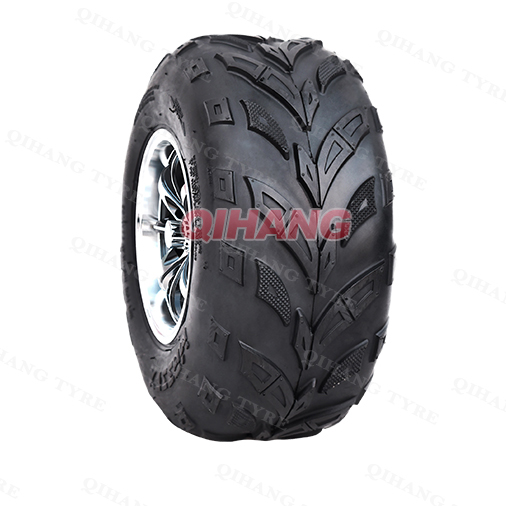Agricultural machinery tires are an important part of agricultural machinery. They have many advantages in agricultural production, but they also have some disadvantages. When selecting and using agricultural machinery tires, comprehensive consideration should be given to actual needs and budget. Its advantages and disadvantages are as follows:
Advantages
1. High load-bearing capacity: Agricultural machinery such as tractors and harvesters often need to carry heavier equipment and crops. High-load-bearing tires can ensure that agricultural machinery can operate stably under various operating conditions and will not be damaged due to overloading.
2. Strong wear resistance: Agricultural machinery often needs to operate in the fields, and the tires are in frequent contact with the ground and wear faster. Tires with strong wear resistance can extend service life, reduce the frequency of tire replacement, and reduce the cost of use.
3. Puncture and tear resistance: There are often sharp objects such as stones and branches in farmland, which can easily puncture and tear tires. Tires with puncture and tear resistance can protect tires from being damaged by these objects and ensure the normal operation of agricultural machinery.
4. Good traction and grip: Agricultural machinery needs good traction and grip to ensure stability and maneuverability when working in the field. The tread and pattern design of the tire can provide good traction and grip, reducing the risk of slipping and rollover.
5. Strong adaptability: The agricultural operating environment is complex and changeable, including different soil types, climatic conditions, etc. Adaptable tires can adapt to various agricultural operating environments and ensure that agricultural machinery can work normally under various conditions.
6. Ultra-low pressure technology: For agricultural tires, ultra-low pressure technology is a breakthrough innovation. This technology enables tires to work at low air pressure, which helps to reduce soil compaction and increase soil porosity, thereby protecting farmland soil ecology and arable land quality. At the same time, ultra-low pressure technology can also improve tire traction and improve operating efficiency.
7. Reduce fuel consumption: The use of advanced tire technology can reduce the fuel consumption of agricultural machinery. For example, ultra-low pressure radial tires can reduce fuel consumption while reducing soil compaction, thereby improving the economy of agricultural machinery.
Disadvantages
1. Higher cost: Agricultural tires are usually made of more wear-resistant and stronger materials to adapt to complex farmland environments and heavy load requirements. These special materials and processes make agricultural tires more expensive to manufacture, which in turn increases the overall cost of agricultural machinery.
2. Heavy weight: Since agricultural tires need to withstand heavy loads and provide sufficient stability, they are usually heavier than ordinary tires. This increases the overall weight of agricultural machinery, which may affect the maneuverability of the machinery, while increasing the compaction effect on the soil, and long-term use may have an adverse effect on the soil structure.
3. High requirements for road surfaces: Agricultural tires are designed to be more suitable for uneven farmland environments, and their performance and durability may be affected to a certain extent when driving on flat roads such as hard roads or highways. When driving on flat roads, agricultural tires may wear faster and their grip may not be as good as tires designed for flat roads.
4. Large noise and vibration: The tread pattern and sidewall structure of agricultural tires make them likely to generate large noise and vibration during driving. This will not only affect the driver's comfort and work efficiency, but may also cause certain damage to the parts of agricultural machinery.
5. High maintenance cost: The complex structure and special materials of agricultural tires make their maintenance cost relatively high. Farmers or agricultural operators need to check the wear and pressure of tires more frequently, and may need to replace or repair them regularly, which increases maintenance costs and time investment.


